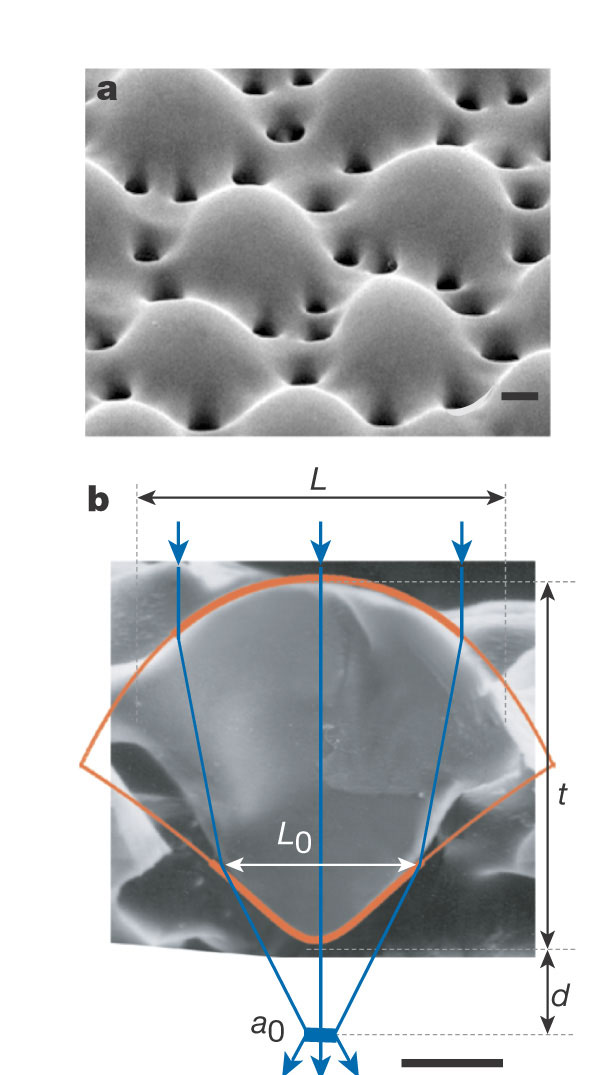 I'm currently working my way through Evolution's Witness: How eyes evolved by Ivan Schwab. When (if!) I've finished, I'll review it. So far, I am not entirely sure how much I like the writing style but it is certainly packed with great images and interesting facts.
I'm currently working my way through Evolution's Witness: How eyes evolved by Ivan Schwab. When (if!) I've finished, I'll review it. So far, I am not entirely sure how much I like the writing style but it is certainly packed with great images and interesting facts.One such interesting fact is the discovery (for me) that certain kinds of brittle stars (echinoderms that are closely related to starfish) have arms that are covered in eyes. One such critter is Ophiocoma wendtii (Picture from the Wiezmann Institute). These have all sorts of interesting abilities, such as being able to regenerate lost limbs (given their name, I guess this happens quite often) and some species reproduce by asexual fission of the central disc, producing two "daughters" with three long legs and, while they regrow, two short ones. I'm not sure if Ophiocoma wendtii is one that reproduces this way but it's the eyes that I'm interested in here!

Left, is a scanning electron micrograph from Photonic structures in biology by Pete Vukusic & J. Roy Sambles (Nature 424, 852-855) of the top of one of the arms (top panel). Each bump is a separate "eye" featuring a calcite microlens that focuses light to photoreceptor cells within the arm tissue. These cover the surface of each arm, meaning that the brittle star can detect light across its whole body.
A close-up of an individual lens is also shown (bottom panel). (The scale bars are, 10μm, so these things are small!) The physics is a bit beyond me but these little eyes feature a "double-lens design" that "minimizes spherical aberration and birefringence that might otherwise degrade the optical function." In other words (I think), these critters get a fairly undistorted view of the direction that light is coming from.
Potentially, they can use the pattern of light and shade to help avoid predators. Perhaps more fun, though, they also use pigment-containing chromatophores to change colour at night in response to light levels. Not to shabby for an animal that we last shared an ancestor with over 500 million years ago!
No comments:
Post a Comment
Thanks for leaving a comment! (Unless you're a spammer, in which case please stop - I am only going to delete it. You are just wasting your time and mine.)